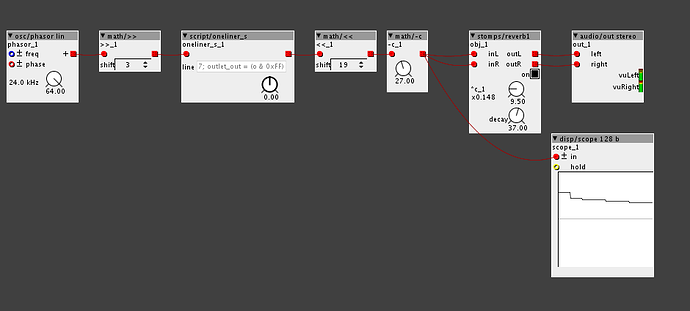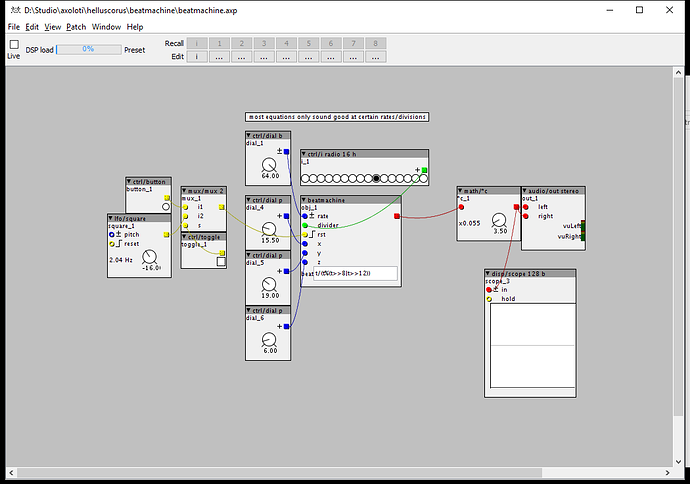its an interesting one...
I think scaling is probably going to be the key... as the functions have to form a waveform, and yet slowly evolve...
I suspect you can probably do it with patch object, and a few shifting operations
for entering the 'equation' you can use the one-liner
e.g. enter the following into a one liner s-rate
int t=inlet_in; outlet_out = ((t<<1)^((t<<1)+(t>>7)&t>>12))|t>>(4-(1^7&(t>>19)))|t>>7;
given its 8 bit, we would presumable need to move this into the lower 8 bits, and then move back after the equation is run.
so, given 1 = 1 << 27 for axoloti... , that would mean for 8 we should do shifts of 27-8, or 19
EDIT: wrong, its Q31 for audio.... Q27 for k-rate
I couldn't resist give this a bit of a go...
bytebeat.axp (3.3 KB)
Im not sure my scaling is exactly right... as Ive noticed it seems best to run the phasor really fast... 24khz, whereas in the article seemed to suggest 8khz, so i think ive missed something ... also id be tempted to put it through some kind of oscilloscope since the built in axoloti one with 128 samples is not really big enough to see exactly whats going on.
and though it is evolving, i suspect the patterns usually are a little longer than the one I'm getting.
(I didnt watch the whole video, so not sure how long they run for with a given equation)
I altered the one-liner a bit, so that it would force result to 8 bit.., but apart from that its the above...
(of course, i could do the shifts in the one-liner too, but thought it was clear for 'demonstration' purposes to do outside.
Id love to see what you get going ... its an interesting idea, that Id not heard of before 





